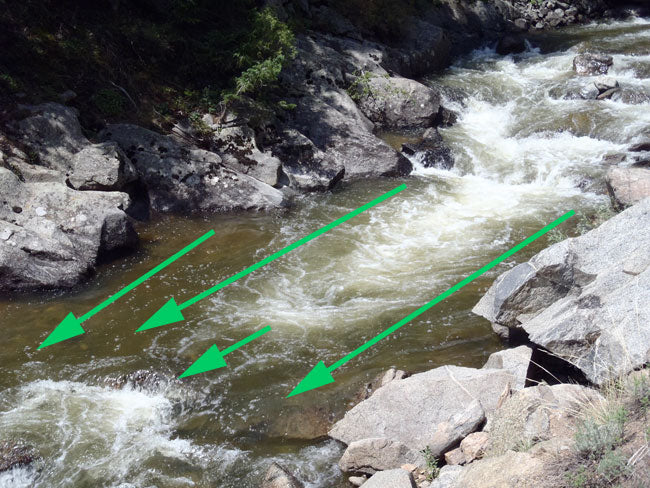Written by Jason
"Trout Hangouts" is an ongoing series in which I highlight one specific element or structure of a river, stream, creek, or lake where trout like to hold and talk about how to approach it. Many fly fishers might know how to fish, but not necessarily where to fish. By dissecting the complicated infrastructures of different types of waters into more focused, manageable pieces, any angler can learn how to read the water and figure out exactly where to cast and apply their skills.
In a recent post, I talked about how fish seek out slower water when rivers are high and muddy. The same rule applies under normal conditions in faster, whitewater runs. While it might be tempting to throw your fly right in the middle of a fast run (because that’s probably the deepest part) it’s not a good holding spot for trout.
First of all, it’s too fast. Trout seek out places where they don’t have to spend a lot of energy to stay in one place. But, they also want to leverage the current to carry insects and other food to them. Essentially, they want to find a lie with a good balance between energy spent vs. energy received. Holding in whitewater just takes too much energy.
Secondly, whitewater is, well, white. With the water churning so violently, it becomes opaque, making it difficult for the fish to see potential food. So even if they did want a workout, they wouldn’t be able to see a nymph if it were right in front of them. Or, by the time they did, it would be long gone because of the speed of the current.
Take a look at the picture above. The green arrows represent where I would focus my presentations. Notice I’m targeting the slower water around the edges of the whitewater. These are the best holding spots for trout in a run like this. Notice too that I’m not only fishing the edges, but the very tail of the run. Fish will hold here too even if it is a only short distance because they get the benefit of the whitewater above them stirring up insects from the bottom, without having to struggle to hold in the faster water. Essentially, you want to carve out the whitewater with your presentations.
Leave whitewater for the kayakers. For the fly angler, the slower moving edges are the more exciting part!
